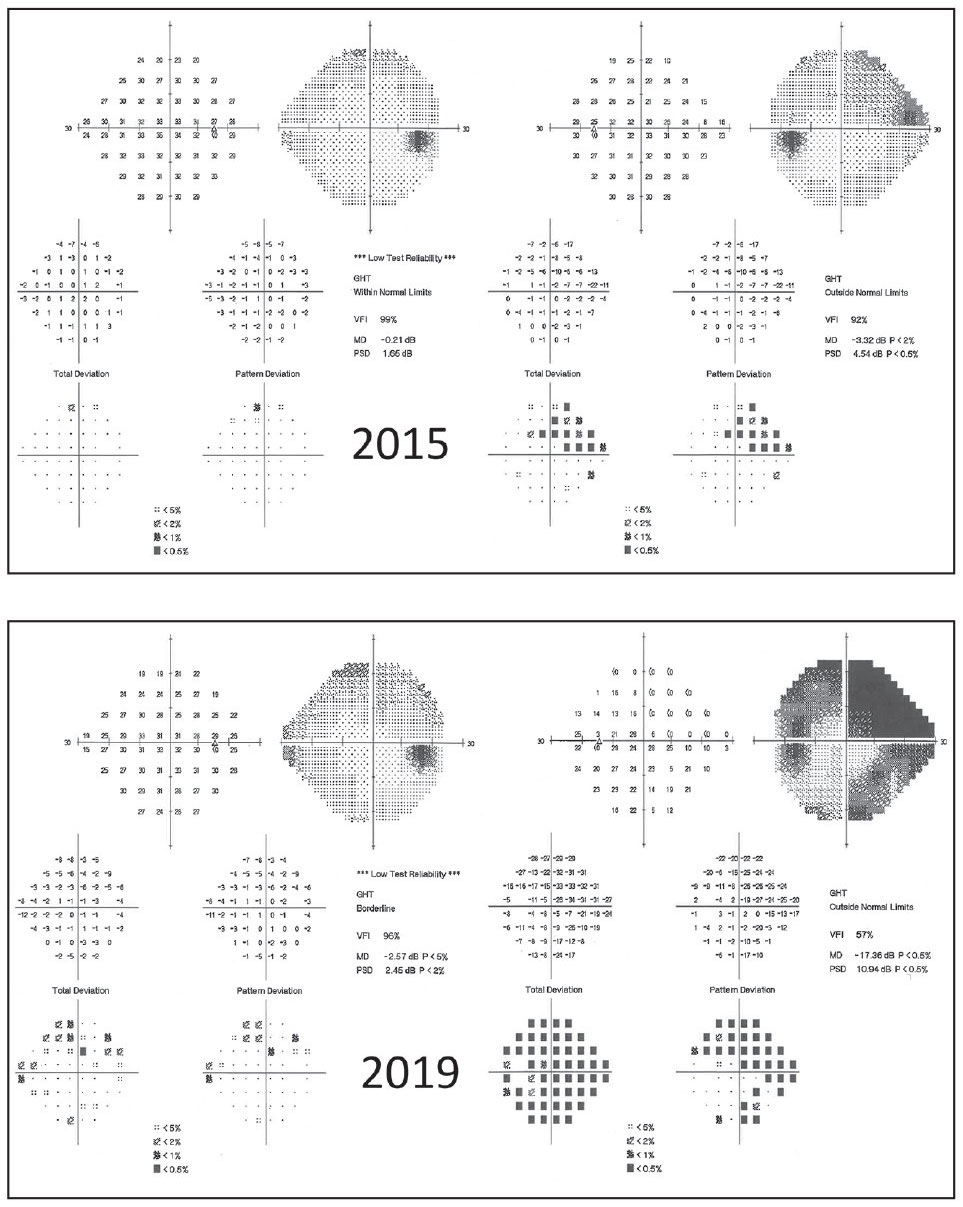 |
| As glaucoma progresses, it may be advisable to switch the perimetry stimulus to the size V target, experts say. Photo: Andrew Mackner, OD. Click image to enlarge. |
Standard automated perimetry using stimulus size III is a workhorse technique for assessing the visual field of glaucoma patients. However, when these patients begin presenting signs of severe vision loss, research shows you may instead want to consider using a size V stimulus in order to capture even more visual information.
A recent study looked at patients with a diagnosis of severe or advanced glaucoma (stages three and four) who were recruited from ophthalmology outpatient clinics between 2016 and 2017 and had a mean age of 56. All patients underwent visual field assessments with static G Octopus 900 perimetry using size III and static LVC size V targets (two tests per eye).
For all 126 patients (170 eyes), mean sensitivity and standard loss variance differed significantly between size III and V tests; however, mean deviation values were largely the same. “Means for size III vs. size V, respectively, were 6.94dB and 12.98dB for mean sensitivity, 20.02dB and 19.22dB for mean deviation, 5.89dB and 7.69dB for standard loss variance and 3.32 minutes and 6.40 minutes for test duration,” the study authors reported in their paper.
They explained several reasons why using stimulus size V may be more reliable than size III for assessing the visual field in glaucoma patients, one being its ability to capture a greater visual response due to the larger target. “Increased test duration, standard loss variance and mean sensitivity were found with size V, as expected, given that more visual responses were obtained with the increased target size,” the study authors wrote.
“Our study only included stages three and four advanced glaucoma with cases where there was substantial visual field loss to the extent that perimetry with size III no longer provided adequate information to facilitate monitoring of the condition for progression/response to treatment,” they continued. “Changing to size V allowed us to further evaluate visual fields with more visual field information being obtained.”
It may be in you and your glaucoma patient’s best interest to switch over to a stimulus size V before severe damage occurs to the visual field, which could make it much more difficult to reliably track progression. “A switch from size III to V may be considered when mean sensitivity reaches 10dB and/or mean deviation reaches 18dB,” the investigators concluded.
Sood D, Czanner G, Somerville T, et al. Standard automated perimetry using size III and size V stimuli in advanced stage glaucoma: an observational cross-sectional comparative study. BMJ Open. 2021;11:e046124. |

